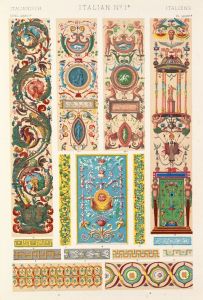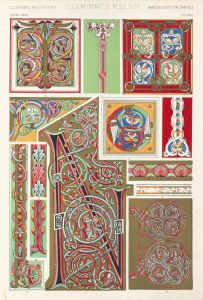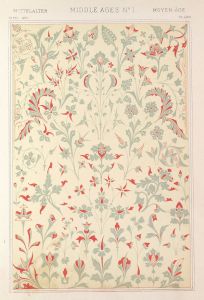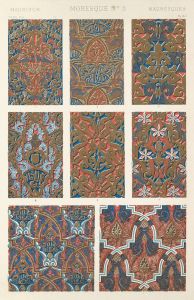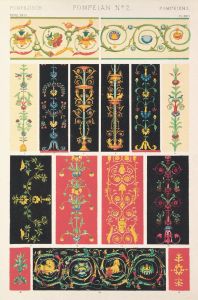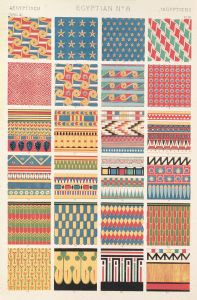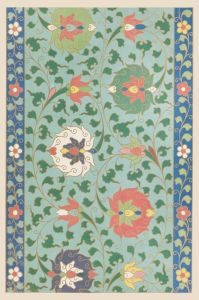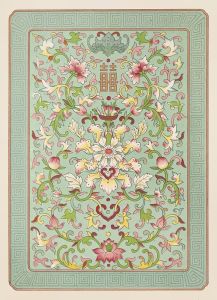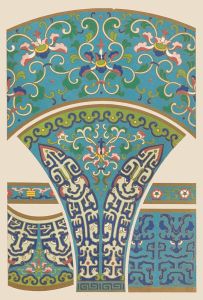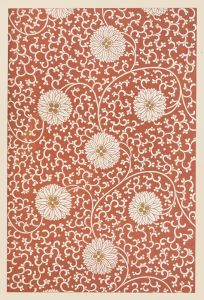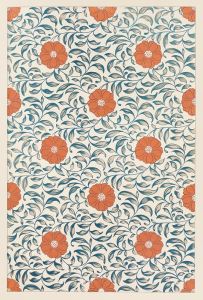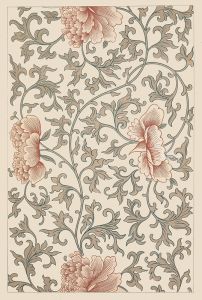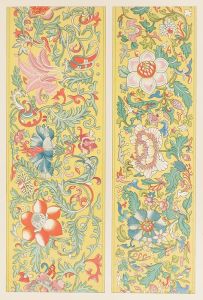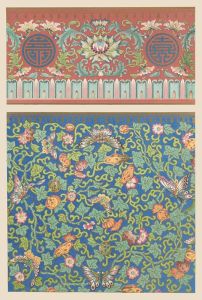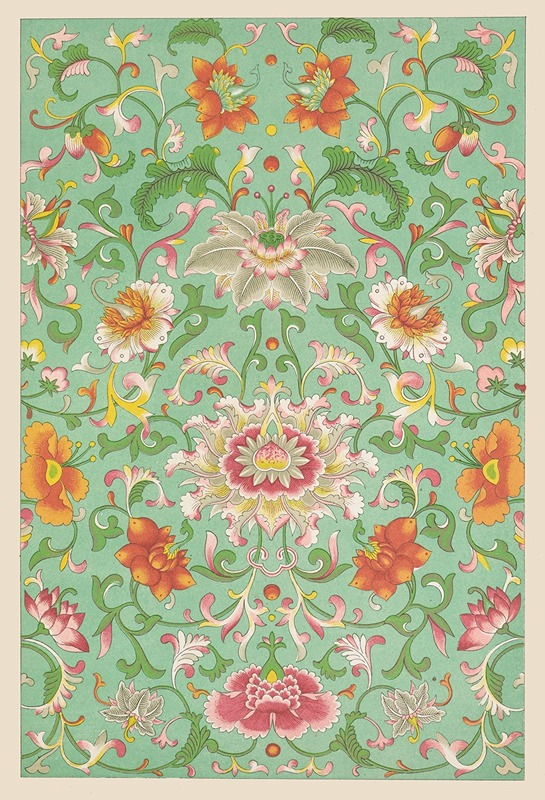
Examples of Chinese ornament, Pl.67
A hand-painted replica of Owen Jones’s masterpiece Examples of Chinese ornament, Pl.67, meticulously crafted by professional artists to capture the true essence of the original. Each piece is created with museum-quality canvas and rare mineral pigments, carefully painted by experienced artists with delicate brushstrokes and rich, layered colors to perfectly recreate the texture of the original artwork. Unlike machine-printed reproductions, this hand-painted version brings the painting to life, infused with the artist’s emotions and skill in every stroke. Whether for personal collection or home decoration, it instantly elevates the artistic atmosphere of any space.
"Examples of Chinese Ornament, Pl.67" is a work by Owen Jones, a prominent British architect and designer known for his contributions to the theory of design and his influential publications on ornamentation. This particular piece is part of his seminal work, "The Grammar of Ornament," first published in 1856. The book is a comprehensive study of decorative arts and design principles from various cultures around the world, and it played a significant role in shaping Victorian design aesthetics.
Owen Jones was born in 1809 and developed a keen interest in architecture and design from a young age. He traveled extensively, studying the art and architecture of different cultures, which greatly influenced his work. "The Grammar of Ornament" is a culmination of his research and observations, showcasing a wide array of decorative styles, including those from ancient Egypt, Persia, Greece, and China, among others.
Plate 67, specifically, focuses on Chinese ornamentation. Jones was fascinated by the intricate and symbolic nature of Chinese design, which he believed exemplified principles of harmony, balance, and beauty. The plate features a variety of patterns and motifs that are characteristic of traditional Chinese art. These include geometric patterns, floral designs, and stylized representations of natural elements, all rendered with precision and attention to detail.
Jones's work was groundbreaking in that it not only documented these designs but also analyzed their underlying principles. He emphasized the importance of understanding the cultural context and symbolic meanings behind ornamental patterns. In the case of Chinese ornamentation, this often involved an appreciation for the philosophical and spiritual beliefs that informed the art, such as the significance of certain colors, shapes, and motifs.
"The Grammar of Ornament" was widely acclaimed for its scholarly approach and its beautiful, hand-colored illustrations. It became an essential reference for designers, architects, and artists of the time, influencing the development of design education and practice. Jones's work encouraged a greater appreciation for non-Western art forms and contributed to the broader 19th-century movement towards eclecticism in design.
In addition to its aesthetic value, Plate 67 and the other illustrations in "The Grammar of Ornament" served as a practical resource for designers seeking inspiration from global art traditions. By providing detailed examples of Chinese ornamentation, Jones helped to introduce and popularize these designs in Western decorative arts.
Overall, "Examples of Chinese Ornament, Pl.67" reflects Owen Jones's dedication to the study and dissemination of global design principles. His work remains a significant historical document, offering insights into the cross-cultural exchange of artistic ideas during the 19th century. Through his meticulous documentation and analysis, Jones not only preserved these ornamental traditions but also highlighted their relevance and beauty to a Western audience, fostering a greater appreciation for the diversity of artistic expression worldwide.





